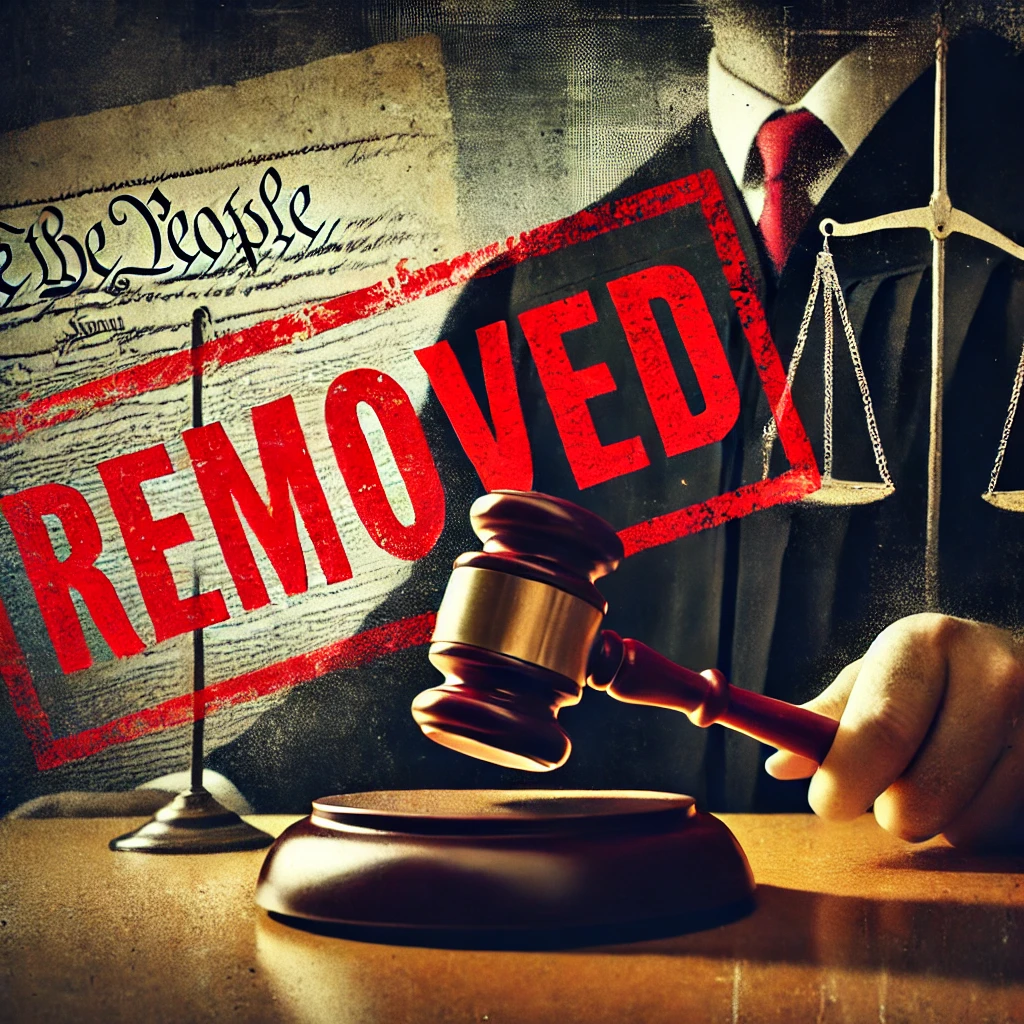Make No Mistake: Federal Judges are Subject to Disciplinary Actions and Removal Mechanisms to Ensure Judicial Integrity and Independence

The primary constitutional mechanism for disciplining or removing federal judges is impeachment, as designated by the Framers of the Constitution (Hastings v. Judicial Conference of U.S., 770 F.2d 1093 (1985)). However, the judiciary also has internal mechanisms to address misconduct that does not rise to the level of impeachment. For example, the Judicial Councils can sanction judges for conduct that is clearly abusive or prejudicial to the adversarial process (McBryde v. Committee to Review Circuit Council Conduct and Disability Orders of Judicial Conference of U.S., 264 F.3d 52 (2001)).
Judicial independence is a fundamental principle, and judges are expected to exercise independent judgment without improper influences (In re Judicial Disciplinary Proceedings Against Crawford, 245 Wis.2d 373 (2001)). However, judges can be disciplined for actions that undermine public confidence in the judiciary, such as attempts to coerce or intimidate other judges (In re Judicial Disciplinary Proceedings Against Crawford, 245 Wis.2d 373 (2001)). In cases where a judge’s conduct is found to be seriously compromising, removal from office can be warranted, even if the judge has already resigned (In re Thayer, 145 N.H. 177 (2000)).
These cases demonstrate that when a judge’s conduct compromises their integrity and impartiality, it can lead to disciplinary actions, including removal from office, to maintain public confidence in the judiciary:
In re Reddin: The court considered whether the judges’ conduct created a fair possibility that the public might be concerned about the judge’s integrity and impartiality (In re Reddin, 221 N.J. 221 (2015)). This case highlights the importance of public perception in maintaining judicial integrity.
Inquiry Concerning Coomer: The court noted that discipline for a judge’s conduct outside their judicial capacity requires a finding of bad faith (Inquiry Concerning Coomer, 315 Ga. 841 (2023)). This emphasizes that not all misconduct outside judicial duties warrants discipline unless it is done in bad faith.
In re Judicial Disciplinary Proceedings Against Crawford: Judge Crawford’s attempt to coerce another judge was found to undermine public confidence in the judiciary, violating the Code of Judicial Conduct (In re Judicial Disciplinary Proceedings Against Crawford, 245 Wis.2d 373 (2001)). This case illustrates that actions undermining judicial integrity and impartiality are subject to discipline.
In re Benge: Judge Benge’s willful misconduct, influenced by outside factors rather than evidence, destroyed public confidence in the judiciary, warranting removal from office (In re Benge, 24 So.3d 822 (2009)). This case underscores the severe consequences of compromising judicial impartiality.
In re Turner: The court stressed the importance of maintaining high ethical standards and the impact of a judge’s conduct on public confidence in the justice system (In re Turner, 76 So.3d 898 (2011)). This case shows that personal misconduct affecting judicial duties can lead to removal.
Matter of Ademiluyi: The Maryland Commission on Judicial Disabilities investigates judicial misconduct and recommends disciplinary actions to maintain judicial integrity (Matter of Ademiluyi, 488 Md. 45 (2024)). This case highlights the procedural aspect of addressing judicial misconduct.
Disciplinary Proceedings Against Kachinsky: Judge Kachinsky’s inappropriate personal conduct with a court employee led to public disrepute and disciplinary action (Disciplinary Proceedings Against Kachinsky, 387 Wis.2d 823 (2019)). This case demonstrates that personal behavior affecting the court’s functioning can result in discipline.
In re Hawkins: The court emphasized that judicial disciplinary proceedings aim to gauge a judge’s fitness to serve impartially, holding judges to higher ethical standards than lawyers (In re Hawkins, 151 So.3d 1200 (2014)). This case reinforces the principle that judicial conduct must promote public confidence.
Mississippi Com’n on Judicial Performance v. Darby: Judge Darby’s confrontational and abusive behavior towards litigants and staff, including wrongful incarceration, warranted removal from office (Mississippi Com’n on Judicial Performance v. Darby, 143 So.3d 564 (2014)). This case shows that abusive conduct in official capacity can lead to severe disciplinary measures.
Matter of Russo: The judge’s multiple violations of the judicial conduct code, including inappropriate questioning and ex parte communications, led to removal from office (Matter of Russo, 242 N.J. 179 (2020)). This case highlights the cumulative effect of multiple ethical violations.
In re Canaday: The judge’s ex parte communications and improper actions in a criminal matter undermined public trust and warranted discipline (In re Canaday, 372 So.3d 328 (2023)). This case illustrates the impact of judicial actions on public trust and the necessity of maintaining neutrality.
In re Sloop: The court linked a judge’s fitness to remain in office to the effect of misconduct on public trust and confidence, emphasizing that grievous wrongs eroding confidence warrant removal (In re Sloop, 946 So.2d 1046 (2006)). This case underscores the importance of public trust in judicial officers.
